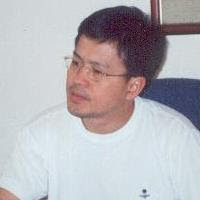There are totally three steps that you would require to decipher a Yi-shi (易蓍), or the hexagram which you casted: the Casting (起卦, or Qi-gua), the Setting (裝卦, or Zhuang-gua), and the Interpreting (解卦, or Jie-gua). This is applicable to all kinds of Yi-shi, not just WWG.
Casting is easy. All you need is 49 milfoil stalks or 3 rounded coins, through which you “randomly” generate six numbers. Not just any number, but the numbers of 6, 7, 8, or 9. The first number is always for the initial (bottom) line (初爻, or Chu-yao). The second number from the bottom for the second line, and so forth. This is used to determined the Lao, Shao, Yin and Yang, i.e., the Change.
Jing Fang’s 8 Chambers Theory
It requires two basic steps for Setting. The first step is to determine which “Chambers” the original hexagram before change (本卦, or Ben-Gua) belongs to. It is called the “8 Chambers Theory” and is believed to be initiated by Jing Fang (京房) of Han (漢) Dynasty.
For Acquired Ba-gua, we have different properties for different trigrams, which are associated with the weathers they represented. For example, Kan ☵ (坎) for Winter, so the property of Kan is Water. Similarly, we have Wood for Zhen ☳ (震) and Xun ☴ (巽), Fire for Li ☲ (離), Metal for Dui ☱ (兌) and Qian ☰ (乾), and Earth for Gen ☶ (艮) and Kun ☷ (坤). Jing Fang was using it as the base for his “8 Chambers Theory”. See the following Table.


No comments:
Post a Comment